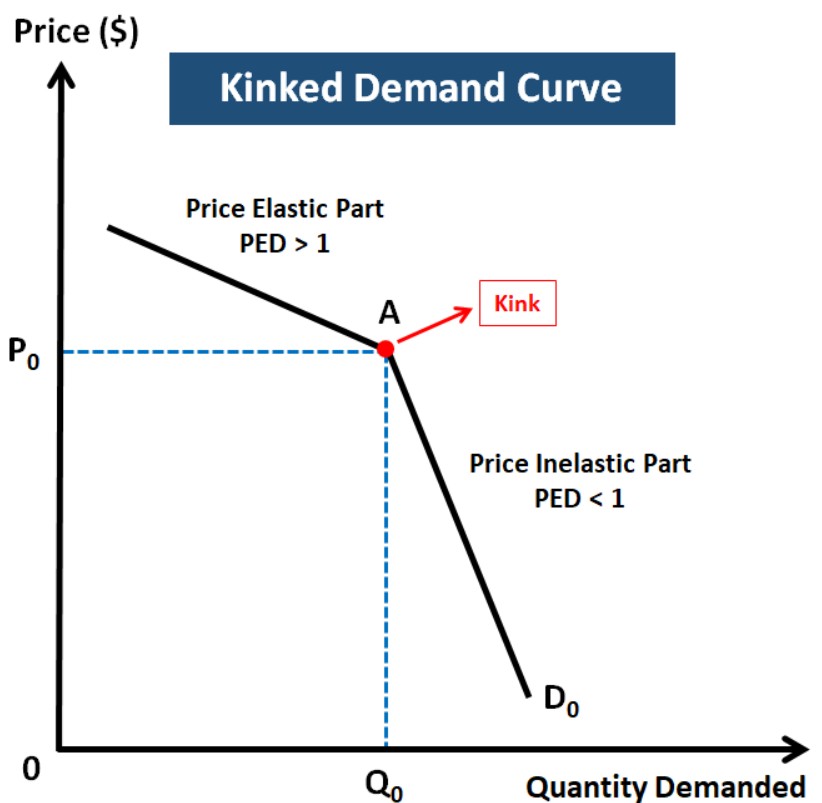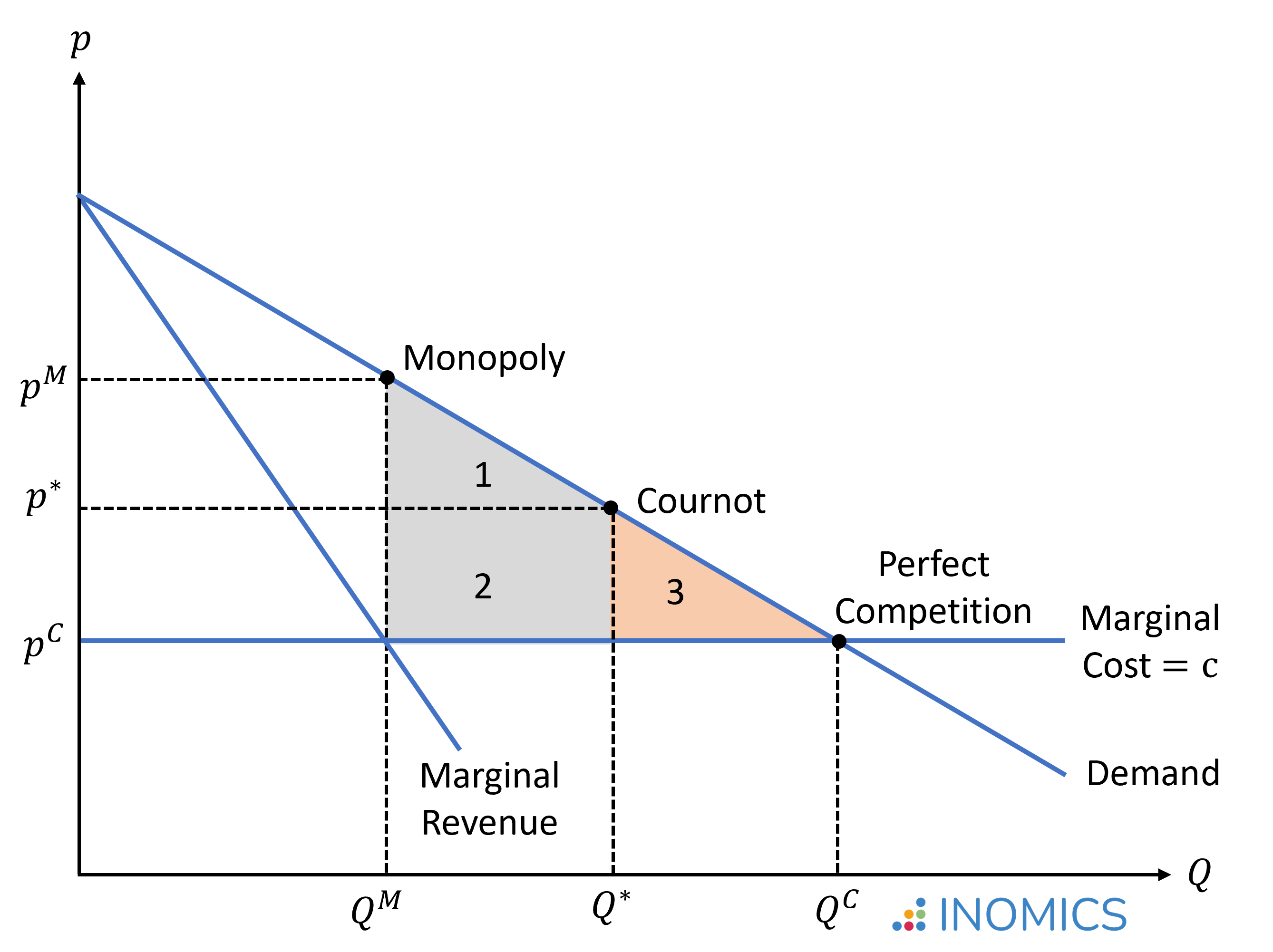🔹 Non-Collusive Models
These models assume that firms do not cooperate or collude but act independently in their own interest.
1. Cournot Model (1838)
Developed by: Augustin Cournot
Type: Quantity competition
Assumptions:
-
Few firms (n) produce a homogeneous product.
-
Firms choose output simultaneously and independently.
-
Each firm aims to maximize its own profit.
-
Market price depends on total market output.
-
No collusion among firms.
How the Cournot Model Works:
- Each firm chooses an output level, assuming the rival’s quantity is fixed.
- The market price is determined by the total quantity supplied (from both firms) based on the demand curve.
- Since each firm’s profit depends on both its own and its competitor’s output, firms adjust their quantities in response to each other’s decisions.
- The process continues until a stable Nash equilibrium is reached, where neither firm has an incentive to change its output.
Cournot Equilibrium:
At equilibrium, each firm produces the quantity that maximizes its profit given the competitor’s output level. This results in a stable market output where firms have no incentive to change their production.
2. Bertrand Model (1883)
Developed by: Joseph Bertrand
Type: Price competition
Assumptions:
-
Few firms (n) producing homogeneous products.
-
Firms set prices simultaneously and independently.
-
Consumers buy from the lowest-priced firm.
-
Perfect information and no transaction costs.
Outcome:
-
Firms undercut each other’s prices until price = marginal cost.
-
Known as the Bertrand Paradox: even with few firms, the outcome resembles perfect competition.
-
Assumes no product differentiation.
3. Stackelberg Model
Developed by: Heinrich von Stackelberg
Type: Quantity competition with sequential moves
Assumptions:
-
Two firms: Leader and Follower.
-
The leader sets output first; the follower responds after observing the leader’s decision.
-
Firms produce homogeneous products.
-
Goal is profit maximization.
Outcome:
-
The leader has first-mover advantage and earns higher profits.
-
The follower reacts optimally based on the leader’s choice.
-
Total market output is higher than Cournot, but less than perfect competition.
4. Sweezy’s Kinked Demand Curve Model (1939)
Developed by: Paul Sweezy
Focus: Price rigidity in oligopoly

Assumptions:
-
Few firms produce homogeneous products.
-
If a firm raises price, others do not follow → loss of market share.
-
If a firm lowers price, others follow → no real gain in share.
Outcome:
-
Creates a kink in the demand curve at the current price.
-
Demand curve is:
-
Elastic above the kink (price increase → large loss in demand)
-
Inelastic below the kink (price decrease → little gain)
-
-
Result: Price stability, even without collusion.
